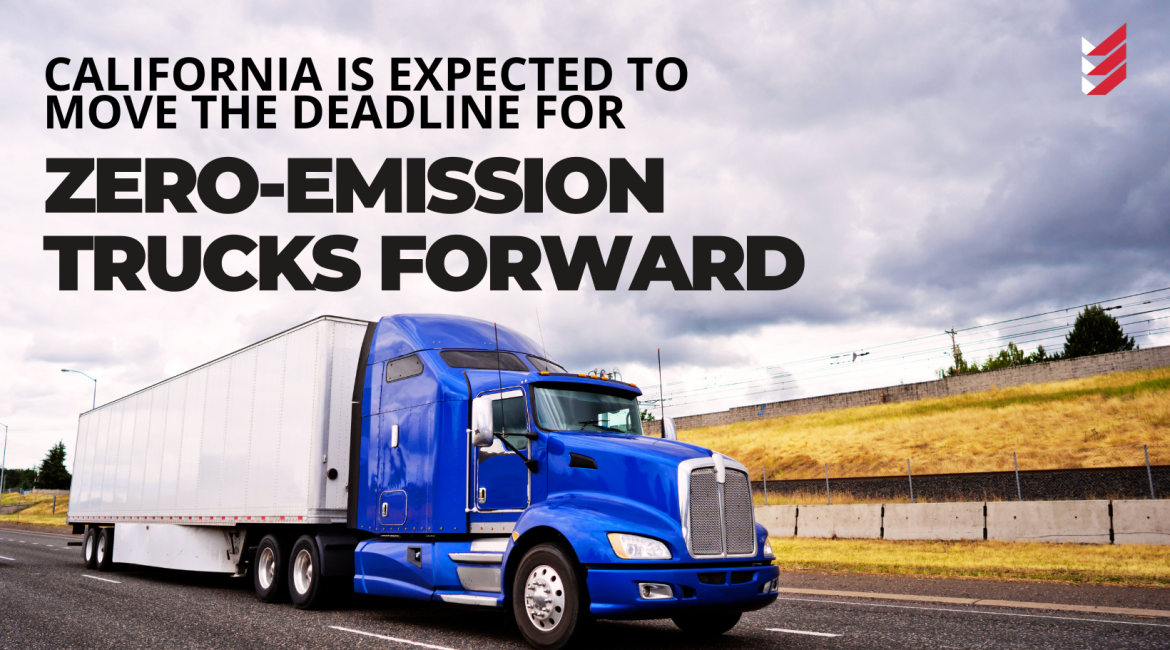The California Air Resources Board has invited public comment on its proposed Advanced Clean Fleet (ACF) rule, which would phase out diesel-powered trucks in the state, despite the fact that CARB lacks the necessary waiver.
This proposal includes a 2036 deadline for requiring zero-emission vehicles (ZEVs) in the state’s trucking sector. The year had been 2040.
The comment section is now available. Comments will be accepted until April 7.
2036: A New Milestone for Zero-Emission Vehicle Adoption
The move to 2036 appears to be the most significant change that CARB has made to its ACF rule. The ACF works in tandem with the state’s Clean Trucks rule, which outlines manufacturer mandates. The ACF is intended for users.
The new rule requires all vehicles made and sold in California by 2036 to be zero-emission.
Even as the ACF nears implementation at the end of the year, the federal Environmental Protection Agency’s waiver remains required. The state’s trucking industry hopes it won’t be granted, but news suggests the waiver is likely.
California is unique because the Clean Air Act allows it to request a waiver to set its own emission standards. According to a recent Washington Post article, the Biden administration is likely to grant California waivers.
Three people were cited by The Washington Post, stating that waiver approval was likely in a March 20 article.
According to the Washington Post, the EPA plans to grant California waivers to enforce stricter environmental rules approved by state regulators.
According to the Post, an agency spokesman stated that the agency would issue its decision on the requested waivers “as soon as possible.”
The waivers are not limited to the ACF. They would also cover new California nitrous oxide emission standards as well as warranty rules.
The American Trucking Associations responded to the Washington Post article, expressing “grave concerns” about its content.
Industry Concerns and the ‘Two-Car’ Problem
“Our industry hopes these reports are incorrect,” said ATA President and CEO Chris Spear in a statement. “We have worked tirelessly with the EPA on aggressive, attainable timelines for reducing emissions over decades.”
Spear went on to say that a truck in 1988 would emit the same amount of pollution as 60 trucks today.
The ATA and trucking industry worry as several states commit to following California’s rules. According to the Post, New York, New Jersey, Oregon, Massachusetts, Washington, and Vermont have all made such a pledge.
The “two-car” problem has worried vehicle manufacturers. Tighter California regulations force them to build two versions of vehicles: one for California and one for the rest of the U.S. Occasionally, tighter emission rules have been agreed upon, like the 2019 deal with a four-company group.
States Following California’s Emission Standards
With California and seven other states committed to following Sacramento’s emission rules, the two-car problem becomes even more pronounced, raising the possibility that the California Clean Fleet rules will effectively become national rules.
The EPA must prove why it would deny the waiver. With California and seven other states adopting Sacramento’s rules, the two-car problem may become national.
According to Britt Carmon, a transportation analyst in the Natural Resources Defense Council’s climate and clean energy program, the EPA is likely to grant a waiver.
Challenges for Drayage Trucks and Charging Infrastructure
“The waiver process is straightforward,” Carmon wrote. “If California proves its standards are justified and align with the Clean Air Act, the waiver will be granted.”
But there is one problem: CARB has not yet requested a waiver.
According to Chris Shimoda, senior vice president for government affairs at the California Trucking Association, CARB needs to request a waiver to proceed with the ACF.
However, Shimoda admitted that a waiver is likely to be granted. “On California waivers, the track record is that every single one is granted,” he said, citing only one denial that was later reversed.
The amended rule advances the 2040 deadline by four years and now allows leeway for drayage trucks if charging infrastructure for ZEVs can’t be installed on time.
